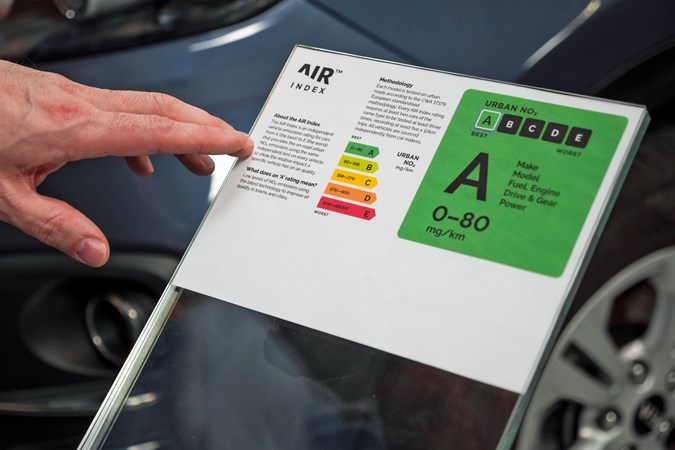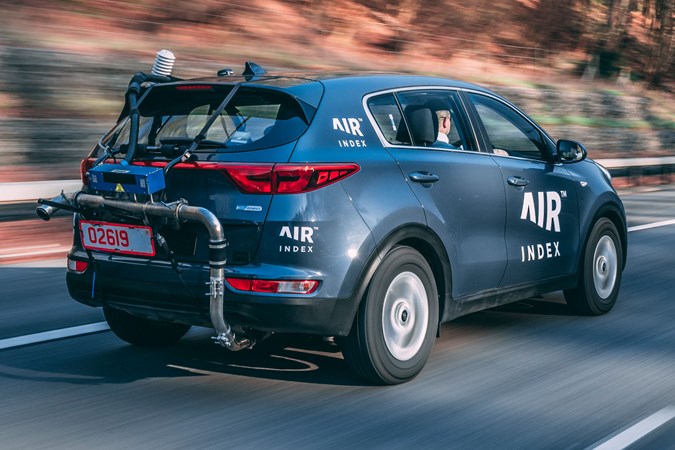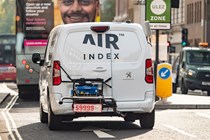The independent AIR Index is a simpler way of showing the emissions ratings of vehicles – including vans. Based on real-world testing, the AIR Index is said to give more accurate data than the current WLTP emissions rating system that’s mandated by law.
But what it might mean for your next van purchase?
>> Sign-up for the Parkers Vans and Pickups newsletter
What is the purpose of the AIR Index – and who’s behind it?
The AIR Index has been developed by the Allow Independent Road-testing (AIR) Alliance, a not-for-profit organisation dedicated to reducing air pollution and tackling climate change with the use of real-world data.
The AIR index is said to make it easier for drivers to see how ‘clean’ their vans are, by using a colour-coded rating in the style of those already used by domestic appliances.

Drivers can view the ratings of any vehicle by using the AIR Index online emissions checker. There are currently 5,872 vans in the system, dating all the way back to 1987, and new models will be periodically added to the index as the testing data becomes available.
Why has AIR created another emissions test?
The AIR Alliance claims that the existing World Harmonised Light-duty Transient Procedure (WLTP) used by UK and European governments to rate vehicle emissions is unrepresentative.
So much so, in fact, that the AIR Alliance claims WLTP underestimates harmful nitrogen oxide (NOx) emissions by a factor of four or five, and carbon dioxide (CO2) figures by as much as 40% – and in previous communications, the AIR Index has reported some vans being eight times higher than their ‘official’ limits.
NOx pollution reduces urban air quality and CO2 is a primary global warming gas.
By using real-world data collected from thousands of vehicles tested in controlled conditions on public roads in the UK and mainland Europe, the AIR Alliance claims that the AIR Index system is a more accurate way of measuring vehicle emissions in the real world.
What does this mean for van drivers?
The Greater London Authority has already committed to using the AIR Index for its Cleaner Vehicle Checker, a tool used in conjunction with the Ultra-Low Emission Zone (ULEZ) to inform buyers about cleaner vehicles.
The AIR Alliance is aiming to have older vans that produce excessively high amounts of NOx removed from the roads – as a means of improving urban air quality without inconveniencing drivers of greener vans.

In this manner, the AIR Alliance is hoping that governments adopt the AIR index to aid in future emissions policy, so that instead of a hard and fast rule about vans of certain ages being penalised, only particularly heavily polluting vehicles might be targeted.
How does it help me now?
By creating an easy-to-understand visual guide to the pollution level of vans both old and new, the AIR Index can guide your purchasing decision – whether that’s because you’re concerned about the environment (and a recent survey by Fiat suggests a lot of van drivers are) or simply want to avoid future penalties for driving a more polluting van.
For it to really matter, the AIR Index will have to be adopted as an official measure beyond the Greater London area and help shape future environmental policy. But even before then it surely makes sense to play things safe and go for the least polluting van that suits your circumstances – helping the environment along the way.
Also read:
>> Survey says more than a third of van driver considering electric van
>> Full guide to Euro 6 for vans and pickups
>> Van emissions up to 8x official limit in independent testing
Just so you know, we may receive a commission or other compensation from the links on this website - read why you should trust us.








